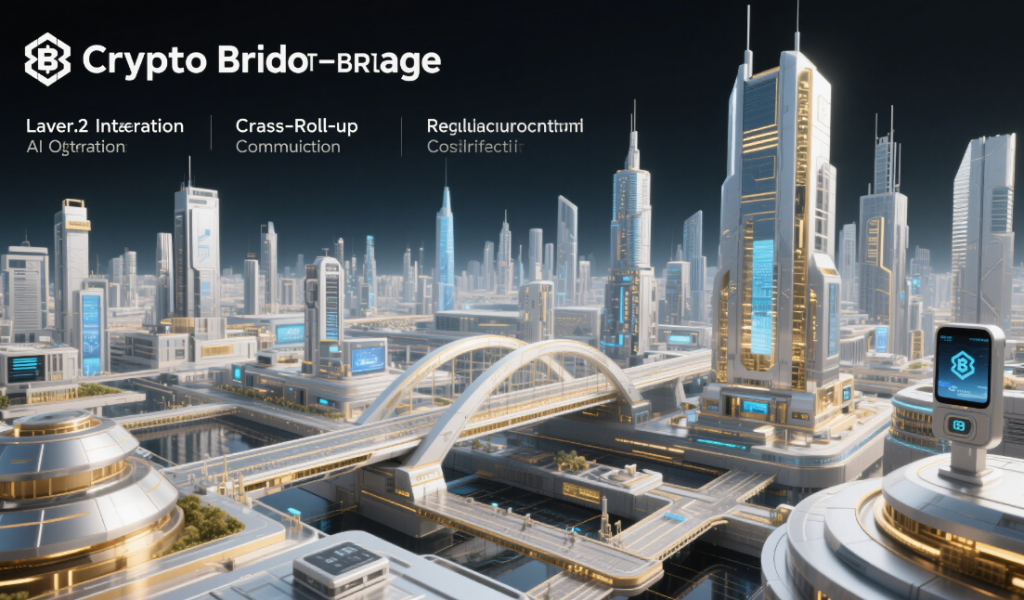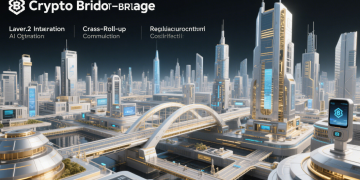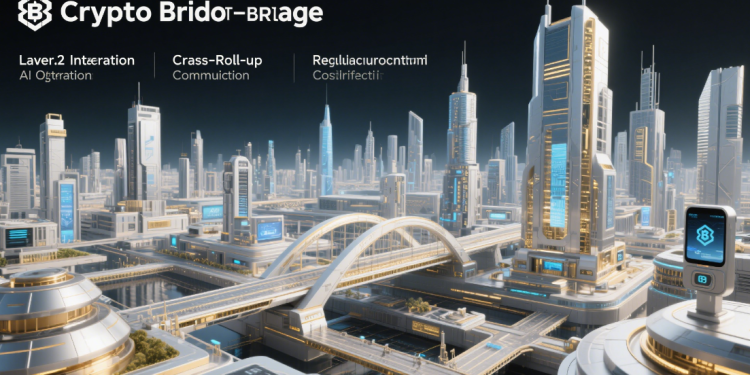In the rapidly evolving blockchain ecosystem, crypto bridges have emerged as the backbone of interoperability, enabling seamless asset transfers and data communication between disparate blockchain networks. As the crypto space grows increasingly fragmented—with Layer 1 chains, Layer 2 solutions, and specialized blockchains each catering to unique use cases—bridges are no longer optional but essential for unlocking the full potential of decentralized finance (DeFi), NFTs, and cross-chain applications. This comprehensive guide explores the mechanics, types, challenges, and future of crypto bridges, equipping you with insights to navigate this critical infrastructure.
What Are Crypto Bridges?
At their core, crypto bridges act as digital highways connecting isolated blockchain networks. They facilitate the transfer of assets (e.g., Bitcoin, Ethereum) and data between chains with different protocols, consensus mechanisms, and governance models. For example, a bridge allows you to move ETH from Ethereum to Solana, enabling participation in Solana’s DeFi ecosystem without relying on centralized exchanges.
The most common bridging mechanism involves locking and minting: users lock their native tokens on the source chain, and a corresponding amount of wrapped tokens (e.g., WETH) is minted on the destination chain. Reverse transactions burn the wrapped tokens to retrieve the original assets. Some bridges, like Stargate, use liquidity pools to bypass this process, offering faster transfers by leveraging pre-funded assets.
Types of Crypto Bridges
Crypto bridges are broadly categorized into trusted and trustless systems:
1. Centralized Bridges
- How They Work: Rely on a central authority (e.g., an exchange or company) to custody assets and facilitate transfers.
- Example: Binance Bridge, which connects Binance Smart Chain with other networks.
- Pros: User-friendly, high liquidity.
- Cons: Single point of failure; users must trust the central entity.
2. Decentralized Bridges
- How They Work: Use smart contracts and decentralized networks (validators/relayers) to execute transfers without intermediaries.
- Example: Thorchain, which enables cross-chain swaps using liquidity pools and decentralized governance.
- Pros: Trustless, censorship-resistant.
- Cons: Complexity, potential for smart contract vulnerabilities.
3. Hybrid Bridges
- How They Work: Combine centralized and decentralized elements. For instance, some use centralized oracles for data validation but decentralized smart contracts for execution.
- Example: Chainport, which integrates with enterprise blockchains while maintaining security through decentralized protocols.

The Role of Crypto Bridges in DeFi and Beyond
Bridges are the lifeblood of cross-chain DeFi, enabling:
1. Asset Mobility
Users can access liquidity pools, yield farming opportunities, and NFT marketplaces across chains. For example, bridging ETH from Ethereum to Polygon allows participation in low-fee DeFi protocols like QuickSwap.
2. Arbitrage Opportunities
Price discrepancies for the same asset across chains can be exploited by bridging tokens to profit from arbitrage. Platforms like Synapse Protocol optimize routes to maximize gains.
3. Scalability
Layer 2 bridges (e.g., Arbitrum Bridge) reduce Ethereum’s congestion by offloading transactions to scaling solutions, lowering fees and increasing throughput.
4. Interoperable DApps
Developers can build applications that leverage multiple blockchains. For instance, a gaming DApp might use Solana for fast transactions and Ethereum for NFTs, connected via a bridge.
Security Challenges in Crypto Bridges
Despite their utility, bridges remain high-risk targets for hackers. In 2024 alone, North Korean hackers stole $1.34 billion via bridge attacks, accounting for two-thirds of global crypto hacks. Common vulnerabilities include:
1. Smart Contract Flaws
Bridges like Nomad (2022) and Wormhole (2022) suffered breaches due to coding errors. In 2025, the decentralized protocol ZKLend lost $9.5 million to a smart contract exploit.
2. Centralization Risks
Centralized bridges like Binance Bridge faced partial breaches in 2024, highlighting the dangers of custodial models.
3. Oracle Manipulation
Oracles, which fetch off-chain data, can be hacked to falsify transaction confirmations. The 2023 Ronin Bridge hack exploited this vulnerability to steal $625 million.
How to Choose a Secure Crypto Bridge
To mitigate risks, follow these best practices:
1. Prioritize Decentralization
Trustless bridges like Thorchain and Across Protocol minimize reliance on central entities. Across, in particular, uses intents-based technology to automate cross-chain transfers securely.
2. Verify Audits and Security Measures
Look for bridges with third-party audits (e.g., Certik, OpenZeppelin) and features like multi-signature wallets and decentralized validator networks. The Arbitrum Bridge, for example, employs a decentralized validator network to enhance security.
3. Check Liquidity and TVL
High total value locked (TVL) indicates robust liquidity. Stargate, with a TVL of $510 million, ensures smooth transactions across 18+ chains.
4. Stay Informed
Monitor bridge announcements and security updates. Platforms like Bitora provide real-time insights into bridge vulnerabilities and best practices.
The Future of Crypto Bridges
As the blockchain landscape evolves, bridges are undergoing transformative advancements:
1. Layer 2 Integration
Layer 2 bridges like zkSync Portal and Starknet Bridge use zero-knowledge proofs for faster, cheaper transfers with mathematical security guarantees.
2. AI-Powered Optimization
Stargate’s AI Planning Module (AIPM) dynamically adjusts fees and liquidity distribution, ensuring optimal performance.
3. Cross-Rollup Communication
Direct L2-to-L2 bridges (e.g., Hop Protocol) are emerging, eliminating the need to route transactions through Ethereum mainnet.
4. Regulatory Compliance
Governments are introducing frameworks like the EU’s MiCA regulation, mandating audits and transparency for bridges.
Conclusion
Crypto bridges are the gateway to a unified multichain future, empowering users and developers to transcend blockchain silos. While security risks persist, advancements in decentralized architecture, AI, and regulatory oversight are reshaping bridges into robust, user-centric tools.
Stay ahead of the curve with Bitora, your trusted source for crypto exchange insights. From real-time bridge analytics to security alerts, we equip you to navigate the cross-chain frontier with confidence. Visit Bitora to explore the latest trends and unlock the full potential of crypto bridges.
This article is brought to you by Bitora, the leading platform for crypto exchange news and analysis. Follow us for actionable insights and expert guidance.



























